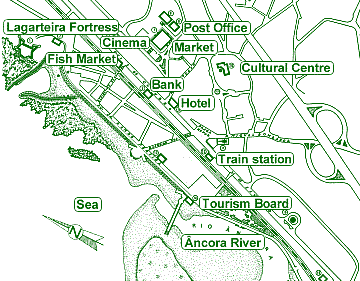|
The area has been populated since the Palaeolithic
era, as the geologist Serpa Pinto demonstrated in 1925: the "Ancorense"
little hills were actually of human origin. They are accumulation of
molluscs shells collected by the first inhabitants for their feeding.
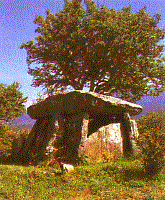 The
region has also numerous megaliths. One of the various examples to be
seen is the "Dólmen da Barrosa" in the city
itself. It has been erected at the end of the third millennium BC (late
Neolithic era) and is classified as national monument. The city was
quite wealthy during the roman occupation thanks to the extraction of
the numerous ores (gold, tin.) carried by the Âncora river.
A lot of legends referred by historians such as the count D. Pedro
attributes the origin of the name Âncora to the assassination
of the queen D. Urraca by the king D. Ramiro II, who drowned
her into the river with an anchor (Âncora in Portuguese)
at her neck as punishment for adultery. The city is referred in the The
region has also numerous megaliths. One of the various examples to be
seen is the "Dólmen da Barrosa" in the city
itself. It has been erected at the end of the third millennium BC (late
Neolithic era) and is classified as national monument. The city was
quite wealthy during the roman occupation thanks to the extraction of
the numerous ores (gold, tin.) carried by the Âncora river.
A lot of legends referred by historians such as the count D. Pedro
attributes the origin of the name Âncora to the assassination
of the queen D. Urraca by the king D. Ramiro II, who drowned
her into the river with an anchor (Âncora in Portuguese)
at her neck as punishment for adultery. The city is referred in the
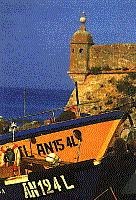 church
registers of 1258 as the Santa Marinha de Gontinhães parish.
At that time it was not on the seaside but well hidden from the ocean
view in order to avoid being a prey for the Scandinavian ships which
were exploring the Iberian coast. church
registers of 1258 as the Santa Marinha de Gontinhães parish.
At that time it was not on the seaside but well hidden from the ocean
view in order to avoid being a prey for the Scandinavian ships which
were exploring the Iberian coast.
Fishing activities were already underway in 1758 as the parish archives
refers to a sea harbour at Lagarteira (north of today's city)
called "Portinho" (little harbour in Portuguese). Close
to the harbour, the fortress D. Pedro III also known as "Forte
da Lagarteira" was the general quarter of the governor. It
features, still today, impressive pieces of artillery, In 1924 the village,
due to its development, was elevated to the rank of city and received
its current name of Vila Praia de Âncora which translates
into "Beach City of Anchor".
|
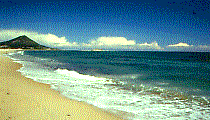
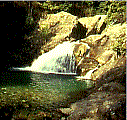
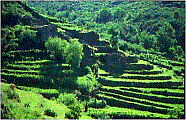


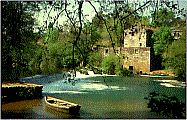
 The
region has also numerous megaliths. One of the various examples to be
seen is the "Dólmen da Barrosa" in the city
itself. It has been erected at the end of the third millennium BC (late
Neolithic era) and is classified as national monument. The city was
quite wealthy during the roman occupation thanks to the extraction of
the numerous ores (gold, tin.) carried by the Âncora river.
A lot of legends referred by historians such as the count D. Pedro
attributes the origin of the name Âncora to the assassination
of the queen D. Urraca by the king D. Ramiro II, who drowned
her into the river with an anchor (Âncora in Portuguese)
at her neck as punishment for adultery. The city is referred in the
The
region has also numerous megaliths. One of the various examples to be
seen is the "Dólmen da Barrosa" in the city
itself. It has been erected at the end of the third millennium BC (late
Neolithic era) and is classified as national monument. The city was
quite wealthy during the roman occupation thanks to the extraction of
the numerous ores (gold, tin.) carried by the Âncora river.
A lot of legends referred by historians such as the count D. Pedro
attributes the origin of the name Âncora to the assassination
of the queen D. Urraca by the king D. Ramiro II, who drowned
her into the river with an anchor (Âncora in Portuguese)
at her neck as punishment for adultery. The city is referred in the
 church
registers of 1258 as the Santa Marinha de Gontinhães parish.
At that time it was not on the seaside but well hidden from the ocean
view in order to avoid being a prey for the Scandinavian ships which
were exploring the Iberian coast.
church
registers of 1258 as the Santa Marinha de Gontinhães parish.
At that time it was not on the seaside but well hidden from the ocean
view in order to avoid being a prey for the Scandinavian ships which
were exploring the Iberian coast.